-
Posts
12419 -
Joined
-
Last visited
-
Days Won
551
Content Type
Profiles
Forums
Events
Everything posted by Fiery
-
You can either completely deactivate the SMART layer of AIDA64 (in main menu / File / Preferences / Stability), or increase the mentioned option (Disk temperature polling frequency) to its maximum possible value of 3600 seconds. If you choose the first workaround, then you'll lose the HDD/SSD temperature measurement capability along with the SMART information. If you choose the second workaround, then you at least can see the SMART information (on demand), and have the HDD/SSD temperatures updated once an hour.
-
Please try to change the option "Disk temperature polling frequency" (in AIDA64 / main menu / File / Preferences / Hardware Monitoring) to 1800 seconds. You need the latest AIDA64 beta to have that option. Let me know what happens Thanks, Fiery
-
It may be the fault of one of the input controller drivers. Do you have any special keyboards or mouse or game controllers connected?
-
What I meant is: do you have stutters more frequently than 20 seconds? Based on your description it's yet again the Intel RAID drivers issue, ie. they cause the stutters I'm afraid You can verify that by raising the option "Disk temperature polling frequency" (in AIDA64 / main menu / File / Preferences / Hardware Monitoring) to 1800 seconds. You need the latest AIDA64 beta to have that option. Let me know what happens Thanks, Fiery
-
Thank you. Are the stutters approx. 20 seconds apart from each other? Or they're more frequent?
-

Command Line starts running Instance instead of creating Report
Fiery replied to Tom's topic in Hardware monitoring
Try to remove the command-line argument /ACCEPTMIN -
Did the previous beta (or v1.50 stable) have no such issues?
-
Please let us know more about your system configuration: 1) Do you use 64-bit Windows 7? 2) Motherboard model, CPU type? 3) Video adapter(s) model? 4) Any external disk drives connected? (USB, FireWire, eSATA) 5) Any RAID arrays defined? If yes, then what RAID controller and how many drives? Which RAID controller driver version? Thanks, Fiery
-

Upgraded to AIDA64 from Everest and now it locks up
Fiery replied to abilly73's topic in Bug reports
That issue may be due to the infamous Catalyst driver issue, namely ULPS. Please try to disable the option "Multi-GPU support" in AIDA64 / main menu / File / Preferences / Stability. Let me know if it helps. Thanks, Fiery -

What exactly are these temperatures measuring? (Asus M4A87TD Evo)
Fiery replied to ch3712's topic in Hardware monitoring
Motherboard temperature is the surface temperature of the sensor chip that is mounted on your motherboard PCB. Your motherboard is not capable of monitoring south bridge or north bridge thermal status. Regards, Fiery -
Everest doesn't support the recent hardware, and it has no advanced RAID or SSD support either, hence it is capable of reading a lot less sensor info from your hardware than the latest version of AIDA64. In order to let us diagnose the lag issue, please let us know more about your system configuration: 1) Motherboard model, CPU type? 2) Any RAID arrays defined? 3) Any external (USB, FireWire or eSATA) drives connected? 4) Windows version? Kernel type? (32-bit or 64-bit)
-
It may be the infamous ULPS issue Please try to disable Multi-GPU support in AIDA64 / main menu / File / Preferences / Stability. Let me know if it helps. Thanks, Fiery
-
It depends on the actual motherboard design whether it implements monitoring special temperatures, e.g. south bridge temperature, north bridge temperature, DIMM temperature, etc. Most Asus motherboards do not implement special temperature or voltage sensors. Except for ROG motherboards (Maximus, Rampage, Crosshair) that do offer a wide range of monitored items.
-
Thanks for the info. 1) Please right-click on the bottom status bar of AIDA64 main window --> Disk Debug --> Disk Controllers Dump. Copy-paste the full results into this topic. 2) Then right-click on the bottom status bar of AIDA64 main window --> Disk Debug --> RAID Dump. Copy-paste the full results into this topic. Thanks, Fiery
-

GA-890FXA-UD5(rev. 2.1)CPU温度检测错误
Fiery replied to jishufashaoyou's topic in Hardware monitoring
Please post your questions or comments in English. Please avoid posting a single issue into multiple topics. Core temperatures are measured by the CPU itself, using Intel DTS. "CPU" temperature is measured by the motherboard, using the sensor chip mounted on your motherboard. Due to the fundamental difference on measuring methodology, it's not advised to compare core temperatures and "CPU" temperature. -

GA-890FXA-UD5(rev. 2.1)CPU温度检测错误
Fiery replied to jishufashaoyou's topic in General Discussion
Please post your questions or comments in English. Please avoid posting a single issue into multiple topics. I've replied in your other topic. This topic closed. -
Your tests seem to prove my statement above: Let's hope Intel can iron out the issues in their Rapid Storage RAID drivers soon
-

Command Line starts running Instance instead of creating Report
Fiery replied to Tom's topic in Hardware monitoring
AIDA64 doesn't support multiple instances, due to collisions would occur then between the low-level modules of each instance. However, in case you already have an AIDA64 instance running, why don't you use the Remore Report feature? -
It should work for both AHCI and RAID. Do you have the latest JMicron driver installed? What version of Windows do you have installed? 32-bit or 64-bit kernel?
-
AFAIK Sabertooth X58 is not capable of monitoring south bridge temperature. Can you see such temperature reading in either the BIOS Setup or in Asus' own hardware monitoring software (PC Probe II) ?
-
Koolance provided us the necessary programming documentation, so we could implement shared memory support in the following new beta release of AIDA64 Extreme Edition: http://www.aida64.com/downloads/aida64extremebuild1224q0sln8yrvxzip After upgrading to this new version, make sure to restart Windows to finalize the upgrade. Let me know how it works. Thanks, Fiery
-
We've fixed the sensor readings for Sabertooth X58 motherboard in the following new beta version of AIDA64 Extreme Edition: http://www.aida64.com/downloads/aida64extremebuild1224q0sln8yrvxzip After upgrading to this new version, make sure to restart Windows to finalize the upgrade. Let me know how it works. Thanks, Fiery
-
We've implemented sensor tweakings for Asus P8P67 boards in the following new beta version of AIDA64 Extreme Edition: http://www.aida64.com/downloads/aida64extremebuild1224q0sln8yrvxzip After upgrading to this new version, make sure to restart Windows to finalize the upgrade. Let me know how it works. Thanks, Fiery
-

Latest AIDA64 not fully compatible with Asus P8P67 Deluxe
Fiery replied to IceMan's topic in Bug reports
We've implemented sensor tweakings for Asus P8P67 boards in the following new beta version of AIDA64 Extreme Edition: http://www.aida64.com/downloads/aida64extremebuild1224q0sln8yrvxzip After upgrading to this new version, make sure to restart Windows to finalize the upgrade. Let me know how it works. I'm not sure what you mean. Can you please show it to me on a screen shot? Thanks, Fiery -
Thank you, we've added those monitoring in the following new beta version of AIDA64 Extreme Edition: http://www.aida64.com/downloads/aida64extremebuild1224q0sln8yrvxzip After upgrading to this new version, make sure to restart Windows to finalize the upgrade. Regards, Fiery

